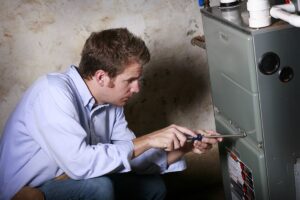Optimizing Your Furnace Efficiency: Pro Tips for Winter Warmth

As the temperature drops and we enter the winter season, it’s important to make sure that your furnace is running efficiently in order to keep your home warm and comfortable. Not only does this ensure a comfortable living space, but it can also save you money on energy costs. In this guide, we will discuss some pro tips for optimizing your furnace efficiency during the winter months. Ready to dive in?
Regular Furnace Maintenance
The best way to keep your furnace running efficiently is by regularly scheduling maintenance checks and tune-ups. This should ideally be done at least once a year, preferably before the start of winter. A professional HVAC technician can inspect your furnace and make any necessary adjustments or repairs to ensure it is running at its peak efficiency. This will not only extend the lifespan of your furnace but also save you money on energy bills.
Clean or Replace Air Filters
Air filters play a crucial role in keeping your furnace running efficiently. Over time, these filters can become clogged with dust and debris, making it harder for your furnace to circulate air. This means that your furnace has to work harder and use more energy to maintain the desired temperature in your home. By regularly cleaning or replacing air filters, you can improve the airflow in your furnace and reduce energy costs.
Programmable Thermostat
Investing in a programmable thermostat can also greatly improve the efficiency of your furnace. This type of thermostat allows you to set specific temperature levels for different times of the day, meaning you can adjust the temperature when you are away from home or asleep. By lowering the temperature during these times, you can save on energy costs without sacrificing comfort.
Proper Insulation
Proper insulation is essential for keeping your home warm and reducing the workload on your furnace. If your home is not properly insulated, heat can escape easily, causing your furnace to work harder to maintain the desired temperature. This will not only increase energy costs but also put more strain on your furnace, potentially leading to breakdowns or malfunctions.
Consider Energy-Efficient Upgrades
If you have an older furnace, it may be worth considering upgrading to a more energy-efficient model. Newer furnaces are designed to use less energy while still providing ample heat, making them a smarter and more cost-effective choice in the long run. Additionally, many utility companies offer rebates or incentives for upgrading to energy-efficient appliances.
There are several ways to improve the efficiency of your furnace and reduce energy costs. Regular maintenance, proper insulation, and investing in a programmable thermostat are all simple yet effective ways to achieve this. Consider making these changes to not only save money but also ensure the longevity of your furnace. Remember, an efficient furnace is not only good for your wallet but also for the environment. So, it’s important to implement these tips and make a positive impact on both your home and the planet. Happy heating!
Other Ways to Save Energy at Home
While improving the efficiency of your furnace can significantly reduce your energy costs, there are also other ways you can save energy at home. Here are a few additional tips:
- Install energy-efficient windows: Windows play a significant role in regulating the temperature inside your home. By installing energy-efficient windows, you can prevent heat loss in the winter and keep cool air in during the summer.
- Use natural light: Instead of relying on artificial lights, try to use natural light as much as possible. Open up blinds and curtains during the day to let sunlight in, reducing your need for overhead lighting.
- Unplug unused electronics: Even when turned off, electronics still consume energy if they are plugged in. Unplug devices when not in use to save on electricity.
- Upgrade to LED light bulbs: LED light bulbs use significantly less energy than traditional incandescent bulbs and can last up to 25 times longer.
By implementing these tips, you can reduce your overall energy consumption and save money on your utility bills. Remember, small changes can make a big difference in the long run.

